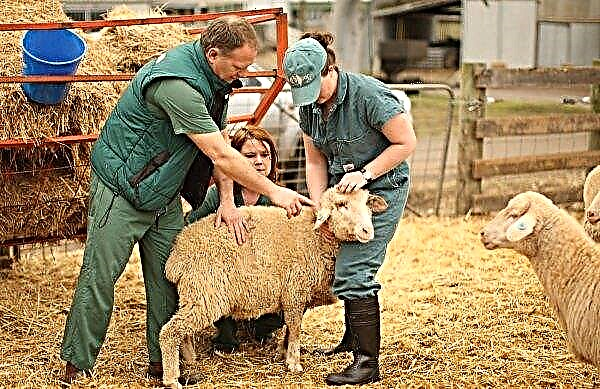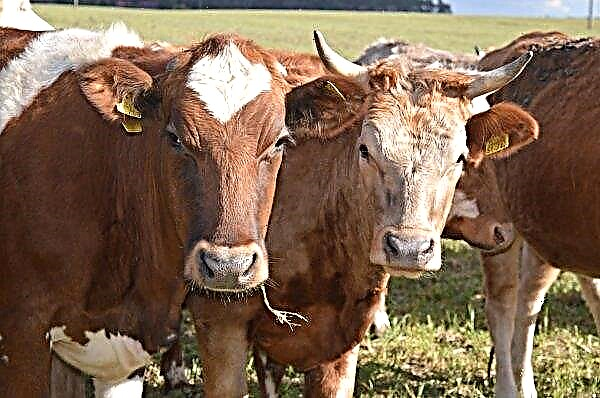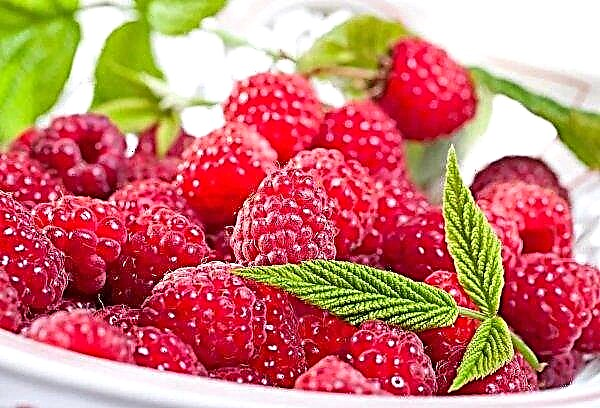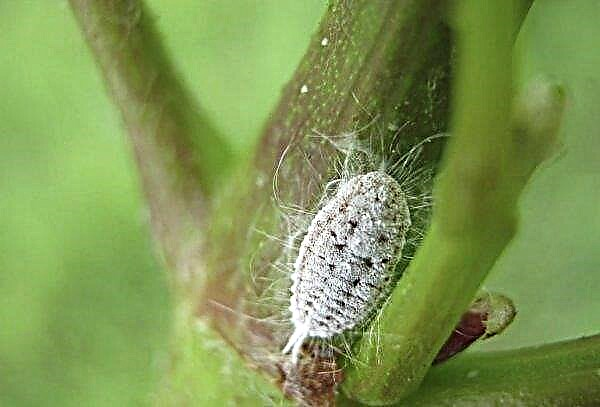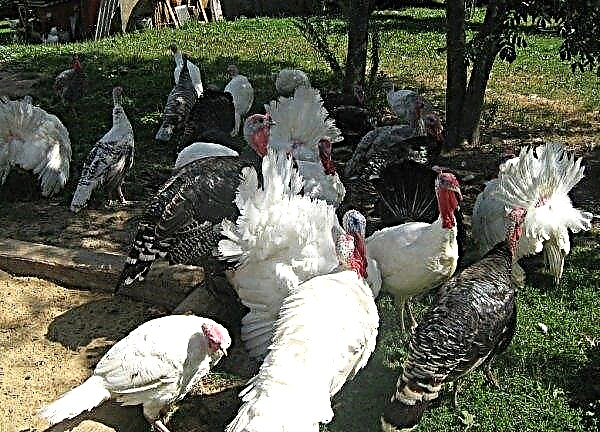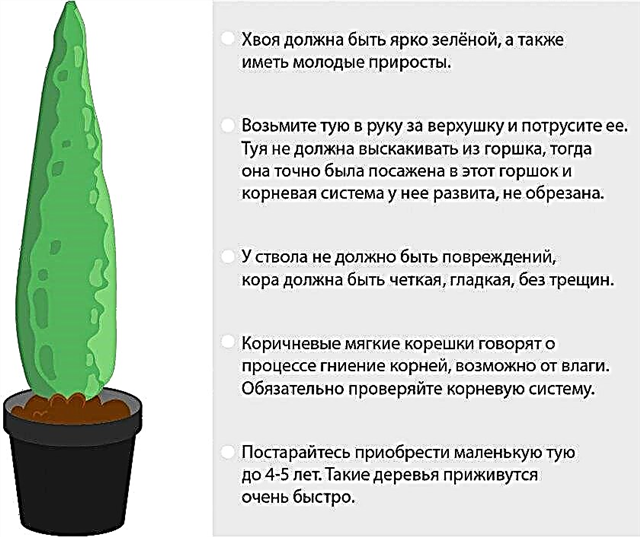Sweet, with a hint of sourness and soft bitterness, bell pepper Swallow, has a positive effect on the entire human body. Gardeners prefer the variety, noting good germination and simple methods of caring for the plant. A detailed description of this pepper and features of cultivation are contained in this article.
Grade description
The daily norm of vitamin C is contained in 100 g of pepper Swallow, the main indicators of which are:
- technical maturation occurs in 115–120 days (depending on weather conditions); the fruits ripen in the middle, at the same time;
- the trunk is single, standard, small branches with many fruits, height ─ up to 60 cm, during the design and ripening period the fruit requires tying to a support;
- the variety is resistant to verticillus wilting, late blight, gray rot;
- peppercorns conical, up to a decimeter long. Weight ─ 10–120 g. The walls are thick, about 7 mm. Technically ripe fruits of bright green color, ripen from yellow to dark red (fully ripe);
- productivity: from one plant to 3–3.5 kg of production;
- seeds harvested from ripe fruits are suitable for planting next year.
Photo gallery
Did you know? Swallow - a variety of bell pepper, bred by selection of the popular Moldova in 1974.
Advantages and disadvantages
- The choice of the Swallow variety for cultivation and sale is determined by such positive qualities:
- good germination;
- inexpensive seed (the ability to collect high-quality seeds yourself);
- early ripening (at the end of July) occurs simultaneously on all plants;
- resistance to weather disasters: tolerates summer temperature drops, rains;
- technically ripe fruits are edible, have excellent taste, are well transported, in a cool place they retain their presentation for a long time;
- high content of vitamin C, minerals useful for the human body, hypoallergenic properties;
- cultivation does not require large labor costs and expensive equipment.
- Negative qualities:
- a plot for planting seedlings must be chosen on the side protected from the wind;
- slow growth at the beginning of the vegetative period;
- growing seedlings in a greenhouse at a temperature not lower than +12 ... + 15 ° С;
- in the absence of watering, it quickly fades, ceases to grow and bear fruit;
- exactingness to garden neighborhood;
- a shtambovy trunk requires obligatory garter to support;
- the crop must be harvested quickly, otherwise marketable and gustatory qualities will be lost (simultaneous ripening).
Growing seedlings at home
Experienced vegetable growers grow sweet peppers seedlings. Hardened, with a strong root system, plants are resistant to diseases and the vagaries of the weather, ripen better.
Optimum timing for sowing
The date of sowing seeds for seedlings of pepper Swallow is determined in this way:
- The biological maturity of the species occurs after 120 days.
- Seeds germinate within 15–20 days (without preliminary treatment).
- Calculation: the crop will ripen on August 10. Less 140 days, we get the sowing date: February 20. You can get the crop earlier by sowing the seeds 10-14 days earlier by checking the weather forecast for the period of the alleged planting in the ground: plants do not like cold, reduce growth.
The soil
The solanaceous origin of sweet peppers requires special attention to the selection and preparation of soil for sowing and growing seedlings. Required soil qualities:
- Porous, loose structure, freely transmitting moisture, air to the root system.
- Neutral, not higher than 7 pH, acidity. The indicator will help prevent black legs in plants.
- Containing organic matter, balanced amount of minerals. The composition includes: peat, humus, sand (sawdust).
 Soil preparation takes place in several stages:
Soil preparation takes place in several stages: - Preparation of components: peat, sand (sawdust) is pre-treated with boiling water. Sift the earth, choose the remains of plant roots, physical impurities (leaves, pebbles, sticks). The soil purchased at the store is mixed with ash, reducing the excess of minerals.
- The components are poured onto the film in the proportion: soil, sand, peat 1: 1: 1. Mix thoroughly. Fertilize: 30 g of superphosphate, potassium sulfate, 10 g of urea. Watered abundantly with water, left on a dense film until completely dry.
- You can destroy harmful bacteria by disinfecting the soil. Natural methods: freezing, steaming, hardening in the oven. Activities are carried out 30 days before sowing seeds. Methods acceptable with a small amount of prepared soil. Growing pepper for sale requires a large number of seedlings, therefore, soil. Loosened soil in the greenhouse a month before sowing is irrigated with fungicides, a solution of potassium permanganate. After drying, add beneficial substances, mix well.

Capacity
Summer residents and gardeners adapt available containers: homemade boxes, plastic bottles, glasses, containers. Peat cups and pots, tablets are widely used. There are rules for dishes, following which seedlings will grow strong, with a good root system:
- Boxes: length 45 cm, width 70, depth - 8 cm. Drainage holes in the bottom with 4x4 squares. Material: wood, plastic, polyethylene. Before sowing, boxes are washed with a solution of antifungal drugs. Set on a flat, well-lit surface, install a pallet under the bottom.
- The best place to grow such seedlings will be separate containers: plastic cups, seedling pots, plastic boxes of sufficient depth, and drainage holes are drilled in the bottom. Before sowing, the containers are washed with antifungal drugs. An important condition: a volume of at least 0.5 liters. This amount of soil contains the optimal amount of nutrients needed for the growth of strong seedlings. The shape is better square. When transplanting from such a capacity, plants are less injured. You can completely avoid damage to the root system by lining homemade pots with newsprint, tracing paper: the paper will help to easily remove the plant, dissolves well in the soil.
- Growing peppercorns in cassettes, choose a sufficient area and volume of compartments. Place pallets with cells on an evenly lit surface for uniform growth of all plants. The circulation of water and air is ensured by making a sufficient number of holes in the bottoms, they are washed and disinfected before falling asleep.
- Peat cups and pots with humus are distinguished by good moisture permeability, air circulation, and a balanced content of minerals. Seed germination time is reduced. Injury to seedlings during planting in open ground is excluded. The negative side: the ability to purchase pressed cardboard, constant control of humidity and temperature in the room.
- A small amount of seedlings for summer cottages is best grown in peat tablets: having the advantages of peat cups, the container takes up less space, contains a sterile mixture that is safe for sprouts. For seedlings of bell pepper, tablets with a low acidity index are bought. Less peat tablets - price.

Seed preparation
The secret of powerful pepper seedlings, averse to disease and resistant to summer temperatures in the correct preparation of planting material:
- Sorting. For sowing, grains of medium size, of the correct form, are suitable. Hollow samples are rejected: for 5 minutes, the seeds are kept in saline water (30 g / 1 l). Hollow specimens will surface.
- Disinfection. Common method: soak the seeds in a medium solution of potassium permanganate, stand for 15 minutes, rinse with running water (through a fine sieve), dry. Modern antifungal agents are widely used by gardeners and industrialists. Drugs are used, carefully studying the instructions, carefully following it.
- Micronutrient nutrition. Folk method: wood ash (20 g) to insist for 24 hours on water (1 l). Soak the pepper seeds in a woven bag in a filtered solution for 5-6 hours. Dry on paper after soaking. The procedure is performed immediately before sowing in the ground. Mineral dressing is also carried out using special purchased mixtures, having previously studied the description of application.
- Dense shell, the content of essential oils increases the germination time of the Swallows. Pre-soaking reduces the period by one and a half times: in one layer the grains are placed on a wet paper, woven napkin, a thin cotton coating, a flat washcloth. Cover with moistened paper, a flap of natural fabric. Constantly maintain moisture until the seeds germinate or swell.
- Natural temperature fluctuations after spring planting with a good result will seedlings from hardened seeds: swollen grains are kept for several hours at a temperature of –1 ° С.
Did you know? For sowing, seeds are collected in the three lower tiers. In advance, choose a plant, leaving the root bud at the age of seedlings.
Sowing seeds
Quality pepper sprouts are the key to a future crop. Having chosen the capacity and date, having prepared the seeds and soil, proceed to planting:
- In peat cups, tablets, cassettes, grains are laid one at a time, after watering the container abundantly with water, cover with soil scraped from the walls of the tank.
- Enriched soil is pre-poured into plastic and plastic cups, slightly compacted (the cup edge is 1.5 cm higher than the soil), the grain is laid on the surface, and covered with a layer of soil of 1.5 cm.
- The soil in the boxes is compacted, the sprouted or swollen seeds are carefully laid out with squares of 2 × 2 cm, covered with a 1.5-centimeter layer of earth.
 After sowing, the soil surface is well moistened. Install in a uniformly lit place. Sprouts will appear in a week, if you cover the container with glass, put in a package, creating a greenhouse effect.
After sowing, the soil surface is well moistened. Install in a uniformly lit place. Sprouts will appear in a week, if you cover the container with glass, put in a package, creating a greenhouse effect.Important! In order not to wash the seeds to the surface, use a spray gun.
Seedling Care
Swallow is a thermophilic plant. Sprouted grains will turn into stems with strong roots and bright green leaves under the following conditions:
- Uniform lighting. For even light, the tanks must be turned regularly.
- Air temperature +15 ... + 17 ° ─ the first 7 days, after ─ to + 25 ° C.
- Water temperature for irrigation ─ + 30 ° С. Water under the root without getting on the sprouts.
- Frequency of irrigation ─ once a week.
- The soil should be moist, but not excessive, have a loose consistency for better penetration of moisture and air circulation;
- The appearance of the fourth sheet ─ dive time, if seedlings were sown in boxes, small cups. Small peat cups are transplanted into large, with a capacity of 0.5 liters. The soil in the boxes is abundantly moistened with a spray gun, the plants are carefully removed using a garden scapula, they are planted in separate containers of the correct volume, deepening along the root neck by 0.5 cm.
- 10 days after the dive, top dressing is carried out: 10 g of room temperature water 30 g superphosphate, 7-8 g urea.
- The earth around the plant is constantly being loosened for better air intake.

Seedling hardening
Peppers are planted in open ground at a time when spring weather can change, reducing performance. Getting a strong healthy crop can be achieved by hardening seedlings. Begin 15 days before disembarkation:
- 1 day: open the window for an hour;
- 2-13 day: increase the period gradually to 8 hours;
- 14 day: taken out to the greenhouse, on the veranda;
- 15 day (before planting in open ground): leave for a day.
Planting seedlings in a permanent place
Ready to plant seedlings contains 8 stable leaves of bright green color, growth 25-30 cm, age 60-70 days. Visually determine the need for a second top dressing 3 days before planting: the dull color of the leaves, the thin stem stem. Nutrient solution: 50 g of superphosphate, 30 g of potassium sulfate in 10 l of water. Watering is carried out in loosened soil, under the root system, avoiding contact with leaves. A bed of pepper meets the following conditions:
A bed of pepper meets the following conditions:
- good illumination, lack of drafts;
- the soil is loose, cleared of weeds, plant roots, without clods; mixed with wood ash for deoxidation, fertilized with peat, pure humus (sifted);
- crop rotation: pepper planted after cucumbers, cabbage, greens, pumpkins.
Prepared seedlings (pour plenty of water into the soil in cups, stand for 5-6 hours for complete penetration of moisture) is best planted in the evening or in the afternoon. The ideal time is cloudy weather. Such conditions contribute to better adaptation of plants to a new place.Important! The distance between the bitter and sweet type of pepper is not less than 15 m, otherwise cross-pollination occurs, taste qualities are lost.
The swallow has a tall stalk with a spreading crown. Planting scheme for single seedlings: square-nested method, between plants - 40 cm, row spacing - 60 cm; when planting two plants in one hole: 60 × 60 cm.
The depth of the hole is 3 cm greater than the height of the pot with seedlings. Planting Algorithm:
Planting Algorithm:
- Add a little peat or humus to the hole.
- Water the soil abundantly, wait until all the moisture is absorbed.
- Carefully remove the plant Swallows from the pot (peat cups are planted directly in the ground).
- Carefully place in the center of the hole, water the edges with water, enveloping the roots with soil. Pour earth over the root leg, compact the surface around the plant.
- Install a peg (height above the bed - 70–80 cm) to tie up adult pepper.
- Set the arcs to the height of the pegs, cover with a film, protecting from night frosts on the ground. Take off the film on the day, increasing access to light.
Outdoor Care
Change of location for pepper - physical injury. Sprouts become sluggish, dull, slow down growth. Help gardener in a stressful period - the right care.
Watering
A day after planting, the soil around the roots of the pepper is loosened for better air circulation, evaporation of excess moisture. The first week they only irrigate the soil around the plants, controlling the soil moisture.
Further watering is determined by weather conditions. Sweet pepper loves water. The quantity, size, taste and juiciness of future fruits depends on the amount of moisture: they completely water the garden, not only around the root system. The soil should be soaked to a depth of 6-7 cm. Even in dry summers, this amount of water is enough for good plant growth and ripening peppercorns. Before the onset of the flowering phase, drip irrigation is used, regulating the flow of water during the day. Manual watering mode: every 2-3 days, in the evening, with water warmed up for the day in the sun. Watering the beds in the morning is possible only in the basal zone, heated to air temperature with water.
Manual watering mode: every 2-3 days, in the evening, with water warmed up for the day in the sun. Watering the beds in the morning is possible only in the basal zone, heated to air temperature with water.
Flowering and the appearance of ligature excludes the use of irrigation of the entire plant. Watering is performed under the root, otherwise the water will wash off the pollen, exclude the appearance of fruits.
Watering is reduced to two times per decade during the formation of fruits: excessive watering will lead to a sharp moisture content in peppercorns, cracking.
Fertilizer application
Benefits Swallows are high in vitamin C and antioxidants. Proper nutrition during the growing season will increase the content of substances that have a beneficial effect on human health and immunity: The first top dressing After 10-15 days after landing on a constant area. Use organic fertilizers:
The first top dressing After 10-15 days after landing on a constant area. Use organic fertilizers:
- 1: 5 solution of cow manure.Insist, filter, to prevent weed seeds from entering the soil, dilute with water 1: 2, bring to the ground around the root;
- chicken infusion infusion. Pour fresh litter in a 1:20 ratio with water, insist for a day, filter, dilute with water 1: 5, water around the plants.
Mineral feeding is carried out with a solution of superphosphate (2 tsp) and urea (2.5) per 10 l of water. On one sprout ─ 1 liter of solution.Important! Exceeded organic solution concentration can kill a plant!
Video: Pepper Fertilizer
Ready-made dressings from the store are used, having studied the instructions, strictly following the instructions. The second top dressing. In the flowering period. Use the same organic compounds, or mineral:
- 1 tsp carbamide;
- 2 parts of superphosphate;
- 10 liters of water.
Tillage
Weeds are prevented by using ordinary table salt: spraying the raised weeds with a 20% solution on a sunny day will burn both the seedlings and root system of the latter without harming future seedlings. After treatment, the soil must be well loosened, avoiding local concentration of the substance on the surface.
During the vegetative period, the soil around sweet pepper is constantly loosened, hilling the roots after each watering, fertilizing, destroying weeds. The process will increase the flow of oxygen to the root system of the Swallow, improve the growth and development of ligature.
The process will increase the flow of oxygen to the root system of the Swallow, improve the growth and development of ligature.
Shaping and tying bushes
To increase the yield, increase the size and juiciness of sweet fruits Swallows will help the correct formation of the crown of the plant:
- pinching the crown bud in the seedling stage;
- pruning sluggish, weak leaves, twigs of the first row in the first week after planting in the ground;
- constant pinching of stepsons at the base of the side branches;
- cutting barren shoots during the fruit set phase.
 A tall standard plant requires a mandatory garter. When planting seedlings in the ground, support columns are installed on which the main trunk of bell pepper is gently tied up to avoid a break and death of the whole plant. Fragile lateral branches with a high concentration of fruits are tied to individual supports, or arrange trellises throughout the garden.
A tall standard plant requires a mandatory garter. When planting seedlings in the ground, support columns are installed on which the main trunk of bell pepper is gently tied up to avoid a break and death of the whole plant. Fragile lateral branches with a high concentration of fruits are tied to individual supports, or arrange trellises throughout the garden.Harvesting and storage
A positive feature of bell pepper Swallow: already in a technically mature stage (early August), the vegetable is used for preserving and preparing nutritious healthy hot dishes, snacks and salads.
The fruits ripen almost simultaneously, which allows you to quickly harvest, sell or arrange for storage. Fresh green pepper is stored in the cellar or in the refrigerator for 1–1.5 months, retaining its taste, smell and appearance.
Quick adaptation, unpretentiousness in leaving, good tastes and a variety of recipes ─ incomplete characteristic of a grade loved by gardeners and summer residents. The swallow has a 50-year history, justifying its origin with stably high yields.



